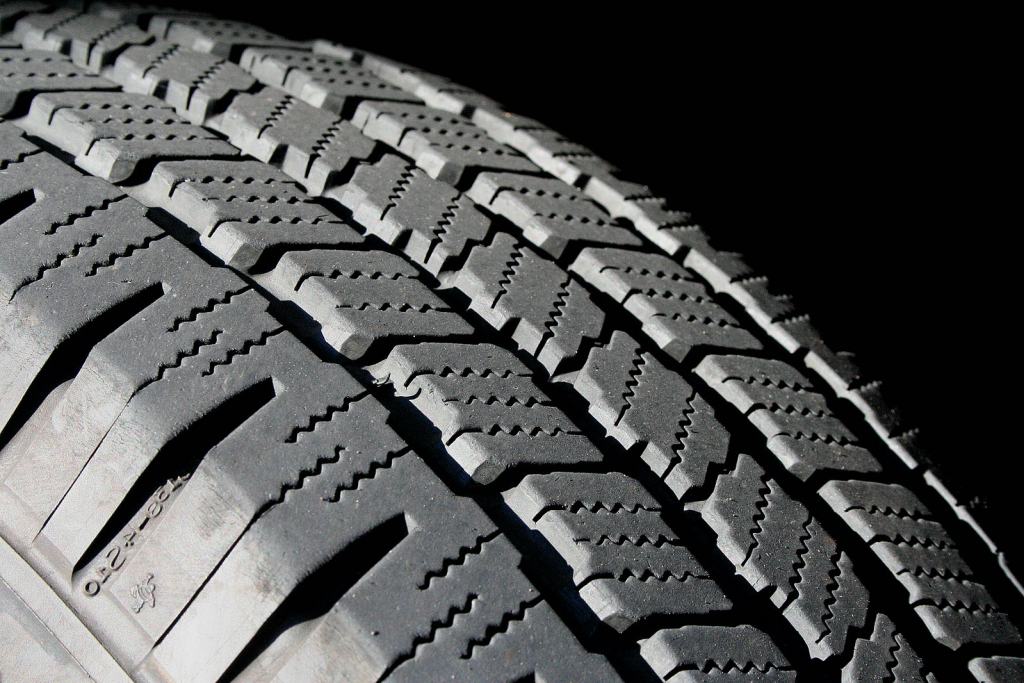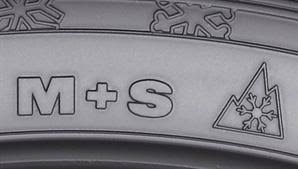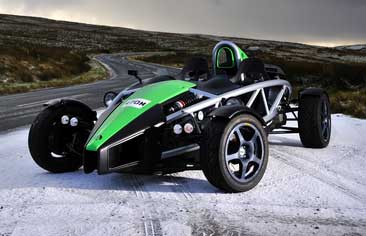A common misconception is that winter tyres are really only needed in severe conditions such as snow and ice. In fact, the high silica and natural rubber content in winter (or cold weather) tyres mean they offer superior traction in all conditions when temperatures drop below 7˚C. Cold weather tyres significantly reduce stopping distances in cold conditions, even at modest speeds, and the more severe the conditions, the greater the advantage.
Continue reading for our complete guide to Winter Tyres to help you answer the all-important question: “Do I need Winter tyres?”.
What are winter tyres?
Winter tyres, sometimes referred to as “snow tyres”, are specially designed for use in temperatures below 7˚C where they help reduce stopping distances and improve handling. Noticable differences between “Winter tyres” and “Summer tyres” become most apparent when the car is being driven on snow or ice as Winter tyres have significantly more traction on these typically “slippery surfaces”.
How do Winter tyres work?
Winter tyres combine various design aspects to give their handling advantage in cold weather. Firstly, they have a higher natural rubber content than ordinary tyres providing them with a much softer structure. As temperatures drop below 7˚C, the rubber in Summer tyres begins to harden, affecting their grip. Conversely, the specially created rubber compound present in Winter tyres ensures continued flexibility in colder temperatures.
Furthermore, winter tyres’ tread are made with narrower cuts (Sipes) and deeper grooves providing them with more surface area and traction. This works because the snow gets pushed into the wider grooves, providing more contact between the wheel rubber and the road, and the sipes enable the tread blocks to dig deeper into the ice or snow. This will help reduce the risk of understeer and oversteer.

How to tell the difference between Winter and Summer tyres
Visually, you can usually identify a winter tyre by looking for the “M+S ” (mud and snow) or Three-Peak Mountain Snowflake symbol on the sidewall.

These two symbols ensure the tyre complies with international regulations. Please note: tyres marked “M+S” but lacking the Three-Peak Mountain are not necessarily proper winter tyres.
You may also be able to tell by looking at the tread depth. On a winter tyre, the depth starts at between 8 and 9mm compared to 7mm on a “summer tyre”.
Regardless, you’ll notice the main difference when you’re driving in cold conditions. The winter tyres will enhance road grip as well as improve your stopping distance. Well renowned tyre manufacturer, Continental, claims that vehicles with winter tyres will come to a complete stop on a snow-covered road after 35 meters from a speed of 30mph. Comparatively, if the same car had normal tyres it may add up to 8 meters (around 2 car lengths) to your stopping distance.
Can you use winter tyres all year round?
As winter tyres are specifically designed for colder temperatures and “slippery” roads, it is not recommended to use them in the dryer, summer months. Using winter tyres in the summer will result in the following disadvantages:
- A decrease in handling performance – due to their flexibility, winter tyres are not optimised for quick manoeuvers or sharp handling in the summer months. They need to be soft and squishy to handle the snow and ice when it’s cold, but this feature is not useful in warmer weather.
- Faster wear and tear – the malleability of winter tyres lends itself to accelerated wear in warmer temperatures. Conversely, all-season and summer tyres are manufactured to tolerate warmer weather providing long wear life.
Using winter tyres in the warmer months will consequently result in a subpar driving experience whilst also resulting in you replacing them more frequently as they wear out quicker.
Do winter tyres work on black ice?
One study found that attempting to stop your vehicle on black ice could take uhttp://www.straightdope.com/columns/read/2016/is-there-really-such-a-thing-as-black-ice/p to 10 times longer than normal. Of course with their improved grip and flexibility, winter tyres will improve traction and stopping distances on black ice, but not by a significant amount. For that reason, care and due diligence must still be taken when driving on roads susceptible to the formation of black ice.
Can I fit winter tyres to just two wheels?
It is recommended that winter tyres are fitted to all four wheels. If they are only fitted to the driven wheels, you may experience unbalanced handling and braking, as columnist “Honest John” writes in a telegraph article:
“If you fit winter tyres to the front only, you will find the car wanting to swap ends (especially down a slippery hill)”
Conclusion
On dry and warm roads during summer months, winter tyres offer less traction and stopping power than high performance summer tyres, so it’s best to run summer tyres from around April to October and winter tyres from November to March (though we do seem to be experiencing winter conditions later on these days, so common sense prevails). Whilst there can be logistical issues in the UK with storing a second set of wheels and tyres it has to be said that, yes, winter tyres are a worthwhile investment if you want to safely use your car year-round; especially a powerful sports car.





